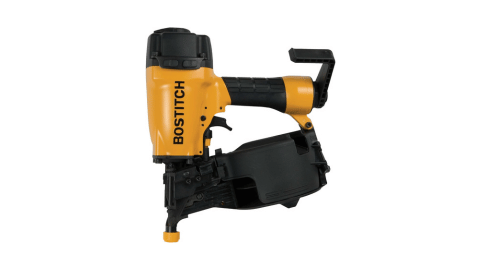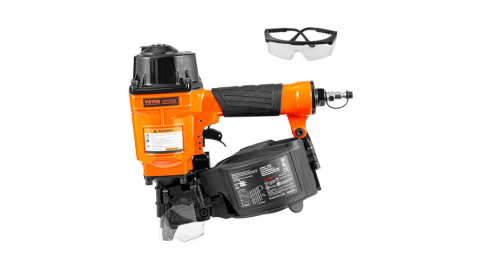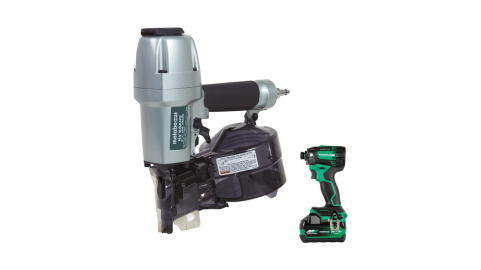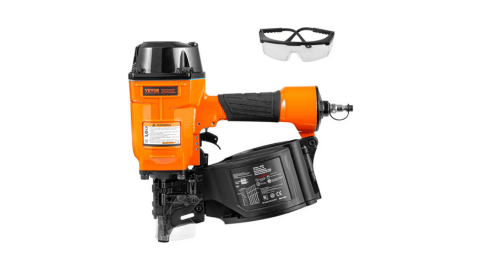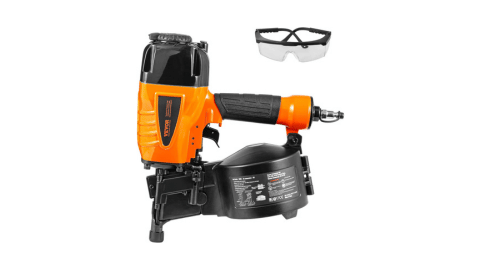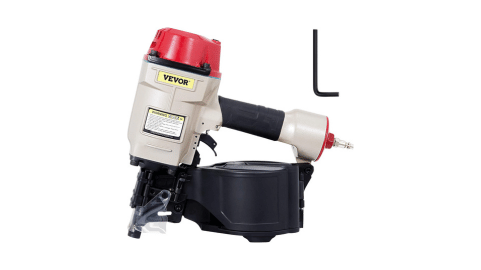A siding nailer is an essential tool for professionals and DIY enthusiasts working on exterior projects like installing wood, vinyl, or fiber cement siding. These nailers provide precise nailing and speed, ensuring that your siding stays securely in place. Whether you’re tackling a small home improvement project or working on larger construction jobs, a reliable siding nailer will save time and effort. In this guide, we present the best siding nailers on the market, chosen for their durability, ease of use, and performance, to help you find the perfect fit.
Best Siding Nailers In 2024 Buying Guide
Siding nailers are specialized tools designed to streamline the process of installing siding on buildings. These powerful devices are essential for both professional contractors and DIY enthusiasts tackling home improvement projects. Unlike standard nail guns, siding nailers are specifically engineered to handle the unique requirements of siding installation, including the ability to drive nails at the correct depth and angle to ensure secure attachment without damaging the siding material. When selecting the best siding nailer for your needs, it’s crucial to consider various factors that can impact performance, durability, and overall value. This guide will walk you through the key considerations to help you make an informed decision and choose a siding nailer that will serve you well throughout your projects.
Power Source Options
One of the first decisions you’ll need to make when choosing a siding nailer is the power source. There are two main types: pneumatic (air-powered) and cordless (battery-powered) models. Each has its own set of advantages and drawbacks, making them suitable for different situations and user preferences.
Pneumatic siding nailers are the traditional choice and are known for their consistent power and reliability. They require an air compressor to operate, which provides a steady supply of compressed air to drive nails. Pneumatic models are generally more powerful and can handle longer nails, making them ideal for heavy-duty professional use. However, the need for an air compressor and hose can limit mobility and add to the overall equipment cost.
Cordless siding nailers, on the other hand, offer the advantage of portability and convenience. These battery-powered tools eliminate the need for an air compressor and hose, allowing for greater mobility on the job site. They’re particularly useful for smaller projects or areas with limited access to power sources. However, they may have limitations in terms of power and runtime compared to pneumatic models, especially for larger jobs or when using longer nails.
Nail Compatibility and Magazine Capacity
The type and size of nails a siding nailer can accommodate are crucial considerations. Different siding materials and installation techniques require specific nail sizes and types. Most siding nailers are designed to work with coil nails, which come in a coiled strip for easy loading and high capacity. Look for a nailer that can handle the nail sizes you’ll be using most frequently, typically ranging from 1-1/4 inches to 2-1/2 inches in length.
Magazine capacity is another important factor, as it determines how often you’ll need to reload. A larger magazine capacity means less downtime and increased productivity, especially on bigger projects. However, a larger magazine can also make the tool heavier and potentially more cumbersome to handle. Consider the scale of your typical projects and find a balance between capacity and maneuverability that suits your needs.
Depth Adjustment and Firing Modes
Precise depth control is essential for proper siding installation. Look for a siding nailer with easy-to-use depth adjustment features that allow you to set the nail depth accurately without tools. This ensures that nails are driven to the correct depth consistently, preventing overdriven nails that can damage the siding or underdriven nails that don’t secure the siding properly.
Many siding nailers offer multiple firing modes, typically including sequential firing and bump firing. Sequential firing requires you to press the safety tip against the work surface and pull the trigger for each nail, offering more precise placement. Bump firing allows you to hold down the trigger and “bump” the nailer against the work surface to fire nails in quick succession, increasing speed for larger areas. Consider which firing modes will be most useful for your typical projects and look for a nailer that offers the flexibility you need.
Weight and Ergonomics
Given that you may be using your siding nailer for extended periods, often at awkward angles or on scaffolding, ergonomics play a crucial role in user comfort and productivity. Look for a model with a comfortable grip that fits well in your hand and provides good balance. The weight of the tool is also an important consideration, as a lighter nailer will be less fatiguing during long work sessions.
Consider features that enhance usability, such as a rotating air fitting on pneumatic models, which can help prevent the air hose from tangling as you move around. For cordless models, pay attention to the weight and placement of the battery, as this can affect the overall balance of the tool.
Durability and Build Quality
Siding installation can be demanding work, often performed in challenging outdoor conditions. The durability of your siding nailer is therefore paramount. Look for models constructed with high-quality materials that can withstand the rigors of job site use. Magnesium or aluminum body construction offers a good balance of durability and lightweight design.
Pay attention to the quality of internal components, particularly the driving mechanism and any plastic parts. Robust internal construction can significantly extend the life of the tool and reduce the likelihood of breakdowns during critical project phases.
Safety Features
Safety should always be a top priority when working with power tools. Look for siding nailers with comprehensive safety features such as trigger locks, which prevent accidental firing when the tool is not in use. A non-marring nose tip is another valuable feature, protecting the siding material from dents or scratches during nail placement.
Some models include dry-fire lockout mechanisms, which prevent the tool from firing when the magazine is empty. This not only enhances safety but also protects the tool from unnecessary wear and potential damage.
Additional Features and Accessories
Many siding nailers come with additional features that can enhance their functionality and convenience. A tool-free jam clearing mechanism, for instance, can save time and frustration when dealing with nail jams. Some models offer adjustable exhaust ports, allowing you to direct the air away from your face and work area.
Consider what accessories are included or available for the siding nailer. A carrying case can protect the tool during transport and storage, while extra no-mar tips can be useful for working with different siding materials. For cordless models, the inclusion of multiple batteries or a rapid charger can significantly improve productivity by reducing downtime for battery changes.
Warranty and After-Sales Support
The warranty offered by the manufacturer can be an indicator of the tool’s expected durability and the company’s confidence in their product. Look for siding nailers that come with comprehensive warranties, ideally covering both the tool and any included batteries for cordless models. A longer warranty period can provide peace of mind and protection for your investment.
Additionally, consider the availability of after-sales support and replacement parts. A manufacturer with a strong reputation for customer service and readily available spare parts can be invaluable if you encounter any issues or need maintenance in the future.
Conclusion
Selecting the best siding nailer involves carefully considering factors such as power source, nail compatibility, depth adjustment, ergonomics, durability, safety features, and additional functionalities. By assessing your specific needs in each of these areas, you can choose a tool that will serve you well throughout your siding installation projects.
Remember that the ideal siding nailer balances power, precision, and ease of use in a way that aligns with your project requirements and working style. Take the time to research different models, read user reviews, and if possible, test the tools before making your decision. Consider the types of siding materials you typically work with, the scale of your projects, and your working environment when weighing the importance of various features.
While it may be tempting to opt for the most powerful or feature-rich model available, the best siding nailer for you is the one that meets your specific needs without unnecessary complexities or expenses. By choosing wisely, you’ll acquire a tool that not only meets your current siding installation requirements but also adapts to your growing skills and evolving projects in the future.
With the right siding nailer in your toolkit, you’ll be well-equipped to tackle siding installation projects with efficiency and precision. Whether you’re a professional contractor or a dedicated DIY enthusiast, investing in a high-quality siding nailer can significantly enhance your productivity and the quality of your work, ensuring that your siding projects are completed to the highest standards of craftsmanship and durability.

